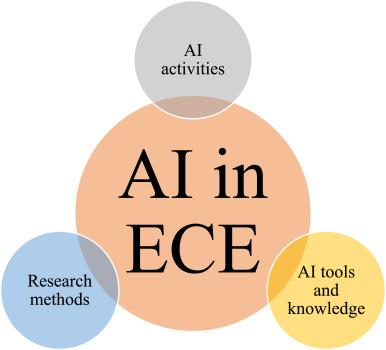AI in Early Childhood Education: Exploring Key Opportunities and top Risks
Artificial intelligence (AI) in early childhood education is rapidly shifting the way young children learn, explore, and interact with their habitat. As more schools, educators, and parents embrace technology, AI-powered tools are reshaping foundational learning experiences, offering unique benefits—and introducing critical challenges.
In this article, we’ll dive into the main opportunities that AI in early childhood education offers, examine top risks and concerns, explore real-world examples, and provide actionable tips for safe and effective implementation.
What is AI in Early Childhood Education?
AI in early childhood education refers to the integration of artificial intelligence technologies with teaching strategies,digital platforms,and interactive tools designed for children aged 3 to 8 years. This includes:
- Adaptive learning apps that adjust difficulty based on a child’s performance
- AI-powered educational games
- Voice assistants that encourage language growth
- Personalized storybooks using natural language processing
- Smart tutoring systems and analytics for early detection of learning needs
The main objective is to enhance learning outcomes and foster cognitive, emotional, and social growth during a child’s formative years.
Key Opportunities of AI in Early Childhood Education
The integration of AI into early years’ classrooms and homes has unlocked several promising advantages:
1. Personalized learning Experiences
- AI-driven platforms analyze each child’s progress and adapt content and activities accordingly.
- This personalized approach caters to various learning styles and paces, supporting both advanced learners and those needing extra help.
2. Early Detection of Learning Disabilities
- Advanced AI algorithms can detect subtle patterns indicating potential challenges such as dyslexia,autism,or speech delays.
- early intervention enables tailored support and improved long-term outcomes.
3. Enhanced engagement Through Gamification
- AI-powered games and interactive apps make foundational skill-building captivating and enjoyable.
- This boosts motivation and helps children retain knowledge more effectively.
4. Real-Time Feedback for Teachers and Parents
- AI tools provide instant insights into progress, strengths, and areas for improvement.
- Informed caregivers and educators can adjust strategies to better meet children’s needs.
5.Supports Marginalized & Diverse Learners
- AI can break down language barriers by translating activities and instructions in real-time.
- This inclusivity supports children in multicultural and multilingual environments.
Real-Life Case Study: AI in Action
To better understand the practical impact of AI in early childhood education, let’s look at a real-world example:
Case Study: LingoKids
- What is it? LingoKids is an AI-powered language learning app designed for children aged 2 to 8.
- How does it work? The app uses AI to assess language proficiency and adapt lessons for each child. It delivers personalized exercises, animated videos, and interactive quizzes.
- impact: Schools and parents report increased vocabulary,enhanced pronunciation,and higher engagement rates,particularly among preschoolers and kindergarteners with diverse language backgrounds.
This showcases how tailored, data-driven lessons can support individualized learning and track developmental milestones.
Potential Risks and Challenges of AI in Early Childhood Education
While the potential is significant, the use of AI in early childhood education also presents significant risks:
1. Data Privacy and Security
- AI systems frequently enough collect sensitive data such as speech patterns, behavioral analytics, and learning profiles.
- If not properly protected, children’s data may be vulnerable to breaches or misuse.
- Compliance with regulations like COPPA (Children’s online Privacy Protection Act) is crucial.
2. screen time and Over-Dependence
- Excessive use of digital devices can impact children’s physical health,sleep,and interpersonal skills.
- Balance is key—AI shoudl complement, not replace, hands-on play and social interaction.
3. Bias and Stereotypes in AI Algorithms
- Poorly designed algorithms can perpetuate cultural or linguistic bias, unintentionally disadvantaging certain groups of learners.
- Diverse and inclusive data sets are vital when developing AI tools for education.
4. Undermining Human Connection
- Young children require consistent interaction with caregivers and educators to develop emotional intelligence, empathy, and interaction skills.
- AI should serve as a support, not a substitution, for meaningful adult-child relationships.
Best Practices: Maximizing Benefits and Minimizing Risks
To make the most of AI in early childhood education, consider the following strategies:
- Choose Reputable AI-Driven Resources: Select apps and platforms that are clear about data use, align with child development best practices, and comply with privacy laws.
- Set Clear Boundaries: Balance AI-driven activities with hands-on, screen-free experiences and social play.
- Stay Engaged: regularly monitor your child’s progress, talk about their learning, and supplement AI with personal instruction and encouragement.
- Encourage human Connection: Use AI as a tool to facilitate—not replace—meaningful teacher and parent interactions.
- advocate for Ethical Development: Support policies and conversations around AI fairness,inclusivity,and privacy in educational technology.
First-Hand Experience: An Educator’s Perspective
“Since introducing AI-assisted reading tools in my kindergarten classroom, I’ve seen reluctant readers grow in confidence. Though, it’s crucial to blend technology with plenty of storytime, discussion, and group play. the best results come from a thoughtful, balanced approach.”
—Ms. Angela Davis, Kindergarten Teacher
Manny teachers echo these sentiments, finding that AI in early childhood education is most impactful when integrated thoughtfully alongside conventional methods.
conclusion: The Future of AI in Early childhood Education
Artificial intelligence is poised to transform early childhood education,amplifying learning opportunities,addressing individual needs,and equipping young learners for the future. However, embracing these innovations responsibly is crucial—prioritizing child safety, emotional well-being, and the irreplaceable value of human connection.
By staying informed, advocating for ethical technology, and maintaining balance, educators and parents can harness the full potential of AI in early childhood education, helping every child learn, thrive, and grow in a rapidly changing world.

